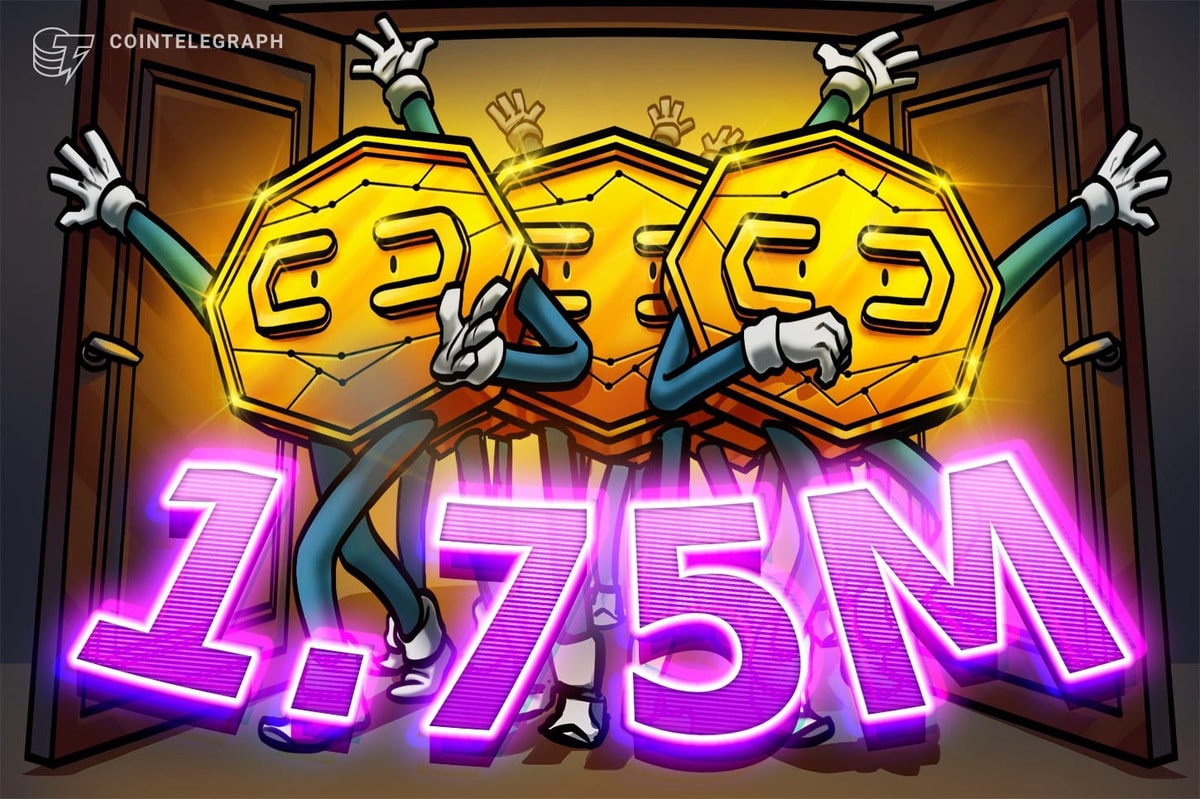What is Solend and how does it work
6 min read
Solend is a decentralized lending and borrowing protocol built on Solana. It is lauded for expanding the methods available for Solana users to boost financial gains. Filling a large gap in the Solana ecosystem, Solend drew a staggering $100 million in deposits in just over a month post-launch.
Related: DeFi lending and borrowing, explained
Solend rode the high scalability of the Solana blockchain, which had built its reputation for being fast and with low transaction fees. The arrival of Solana meant users could use their capital efficiently by lending and earning interest, using the funds lying idle to earn profits from a plethora of opportunities. In line with the philosophy behind decentralization, Solend is a community-driven project where voters collectively make decisions.
This article explores Solend and its workings, including lending and borrowing, earnings and rewards, creation of pools, associated risks, the whale issue and other related concepts.
What is Solend?
Solend is an autonomous lending and borrowing platform that enables users to borrow or lend assets on the Solana network. An algorithm determines interest rates and collaterals on the protocol, allowing users to earn interest and leverage crypto assets long or short on the platform. SLND, the native token of Solend, provides exposure to Solana’s decentralized finance (DeFi) market.
When Solend launched in August 2021, its total value locked (TVL) was less than $20 million. Around three months later, its TVL skyrocketed to approximately $1 billion. Solend hopes to be the largest DeFi lending and borrowing protocol on the Solana network.
Previously, Solend was prototyped as part of the June 2021 Solana Season Hackathon, which it won. The success catalyzed the project to walk into the world of DeFi as a lending protocol.
How does Solend work?
At its core, Solend allows users to engage in decentralized lending on the Solana network. Users deposit assets to their accounts on Solend and earn interest. Moreover, they can also collateralize their deposits to get loans without justifying their means to repay.
An autonomous app, Solend eliminates the need for borrowers to go through a complex underwriting process to determine the financial risk for an institution when sanctioning a loan. They could easily take long and short-term loans, as all processes are self-propelled thanks to smart contracts that factor in a multitude of clauses for setting up borrowing limits and collecting interest.
How crypto lending works on Solana
For lending and borrowing on Solend, users require a Solana wallet with enough funds to pay the gas fees. They need SOL, the native cryptocurrency of Solana, to access the functionality of the network.
Users can borrow or lend cryptocurrencies on compatible platforms. The number of crypto tokens the platform supports is steadily growing. This enables users to leverage a broad array of crypto assets, including native coins, stablecoins and memecoins, adding versatility to the platform. The entire listing process is governed by the community, in sync with the philosophy of DeFi.
Before users can borrow or lend crypto assets, they need to connect their Solana wallet to the platform and add SOL to their account. Users can check their transaction details through an account panel.
Earnings and rewards
The lender not only earns interest based on annual percentage yield, resembling conventional lending, but also additional rewards in the form of SLND tokens, which are the native tokens of Solend.
Pools
Solend has a main global liquidity pool, with several smaller isolated and permission pools. Tokens having reliable oracles and thick liquidity can be listed in the main pool. Most tokens, however, are listed on isolated pools first before being shifted to the main pool.
Isolated pools are smaller ones for listing tokens with less liquidity and more volatility. Permission pools enable anyone to create an isolated pool on the protocol.
The creator of an isolated pool earns 20% of the origination fees generated in the specific pool. Tokens available on the token list, along with a predetermined trade volume, will appear on the listing. Once all the parameters are met, users must click the “Create pool” button to create a pool.
Account panel
The account panel is visually pleasing and intuitive, which people can begin working on without going through extensive tutorials. The panel has the “Supply” option, telling users about the interest they could earn. On the other hand, the “Borrow” option tells users the amount they could borrow based on the crypto assets they hold.
The red bar on the account panel indicates the liquidation threshold on each loan the users have taken. If the value of the collateralized asset goes down and the loan goes past the liquidation threshold, the system can liquidate the users’ assets and deposit the funds with the lenders.
How Solend earns
Solend itself earns by levying protocol fees on loans. The fees also help an insurance fund for the platform. The users can quickly borrow and sell crypto assets without paying excessive transaction fees. Solend’s treasury provides insurance cover for the assets in the pool in case of any exploits or hacks.
Risks associated with using Solend
While talking about the salient features of Solend, there are risks associated with using it:
Wrong feed by oracles
Oracles reporting the wrong feed could play havoc on Solend. The price feeds of Pyth Network and Switchboard trigger liquidations on the platform. These oracles reporting incorrect prices would result in wrongful liquidations.
On Nov. 2, 2022, Solend did suffer an oracle exploit, culminating in $1.26 million of bad debt. The related pools were disabled and exchanges were informed about the exploiter’s address.
Vulnerability of smart contracts
Another risk possibility is a bug or vulnerability of the smart contract. Solend is an algorithmic, decentralized protocol, and any malfunction of the smart contracts might result in the theft or permanent loss of funds.
Related: What is a smart contract security audit: A beginner’s guide
100% utilization of funds
Like all DeFi pools, a risk scenario is 100% utilization of funds. One cannot take a loan if no assets remain in the pool. The problem is termed 100% utilization. However, if borrowers keep repaying their loans or new supplies keep arriving, such a problem may not arise.
Liquidations
Yet another risk possibility is associated with liquidations. Though Solend offers overcollateralized loans, one cannot forget that the crypto market is volatile, with fluctuating asset values that could result in the liquidation of funds of an unsuspecting user. This makes it important for everyone to pay close attention to their loans and investments.
Large, single borrowers
Being a large lending pool, a key vulnerability of Solana is the presence of a large, single borrower, called a whale. Whales have an outsized presence in the protocol. This resulted in a June 2022 crash involving a whale borrower.
A Solana whale with $108 million almost crashed the Solana network in June 2022. The protocol barely avoided the liquidation of 95% of SOL deposits in its lending pool. Let’s dig a bit deeper into how it all happened.
The whale had an outstanding loan of $108 million worth of USD Coin (USDC) and Tether (USDT), backed by collateral of $170 million worth of SOL. Everything was fine while the price of SOL was high, but when it tanked around June 15, the whale’s account was on the verge of the liquidation threshold. It could have resulted in over $21 million of SOL getting dumped in a single shot, with severe repercussions in the market.
The project developers tried to contact the whale to no avail. They were forced to post on Twitter and Reddit, urging the whale to contact them, which spooked many other users who began to pull out their funds. The developers eventually managed to contact the whale, who added more collateral.
However, before the whale added the collateral, the developers — in their quest to control the damage — proposed emergency powers to control the account in the event of liquidation. This earned them bad press, as it was against the spirit of decentralization. The final measure was to set up a borrower ceiling of $50 million.
The future of Solend
Solend has brought the power of DeFi to the Solana network, offering users many opportunities that have the potential to beef up their profits. Though the whale issue laid bare the vulnerability of the protocol, the silver lining was the developers’ ability to handle things. Crypto is still a new industry where people are learning on the move. The successful handling of the whale issue to the satisfaction of most stakeholders raised the protocol’s credibility.
Furthermore, Solend brings a strong DeFi element to the Solana ecosystem. Vulnerabilities notwithstanding, the application is intriguing to tinker with, and as the loopholes get plugged, more users might find it exciting.






